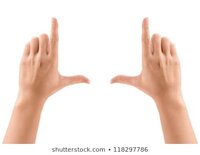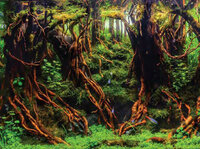Ok some creations if not many or maybe most are a bit over the top and in aspect from used species or number of different species in relation to footprint. Ok again but that's not the point, the point is event ho its a fantasy world creation, but it looks natural and gives a natural feel. You should give the hobby and its artistic freedom some slack from that aspect..
Even the diorama scape with a manicured medow and a path running through into the hills can have a realistic origine in a what if scenario. It's a bit like holywood creating Water World with a realistic scenery of a sunken city in how it would look flooded.
And mater a fact places like that in nature do excist in reality.
🙂 I can take as best example that i could find the Grüner See valey in Austria. Its a valey that floods once a year in the spring with snow melt water. The rest of the year its a wonderfull green park for hikers. And a few month per year it looks like this under water.



Thats Iwagumi and Nature scape diorama sap shots all over.
And that's actualy what aquascaping represents many times, it's a snap shot in time.. There is another Dennerle video published with under water images from a small clear stream that runs behind the Dennerle nursery. Also in that stream they made a few perfect natural created Iwagumi snapshots that could be taken out of the stream and placed into an aqaurium and you would have a price winning scape. And those very little beautifull Wabi Sabi natural creations were the mother of the idea and concept to recreate it into an aqaurium.
Go into nature forget the big picture for once and give your eyes the time to find these little snap shot gems, frame it looking through your hands. They do excist, more then you know they are all around you maybe the best in the smallest negelected gardens on your path.

And imagine it flooded.. It may be surealistic in terms of what you use for it to get the image that you want.. It isn't about the destination only , its more about the journey and the experience while gettting there/to the final idea.
🙂 What's not surealistic is the biological and natural benefit gained with using alternative plants that can do the job. Its not only creative from a view point it's also creative in how to create a healthy invironment.
If you want to take unrealistic in this hobby than rather start with the 100% realistic looking snap shot, plantless so called Biotope aqaurium. That is from a big pictures aspect as far from biotpope as it can get.

I even dare to say, for 90% its far from creativity as well. No pun intended.
















